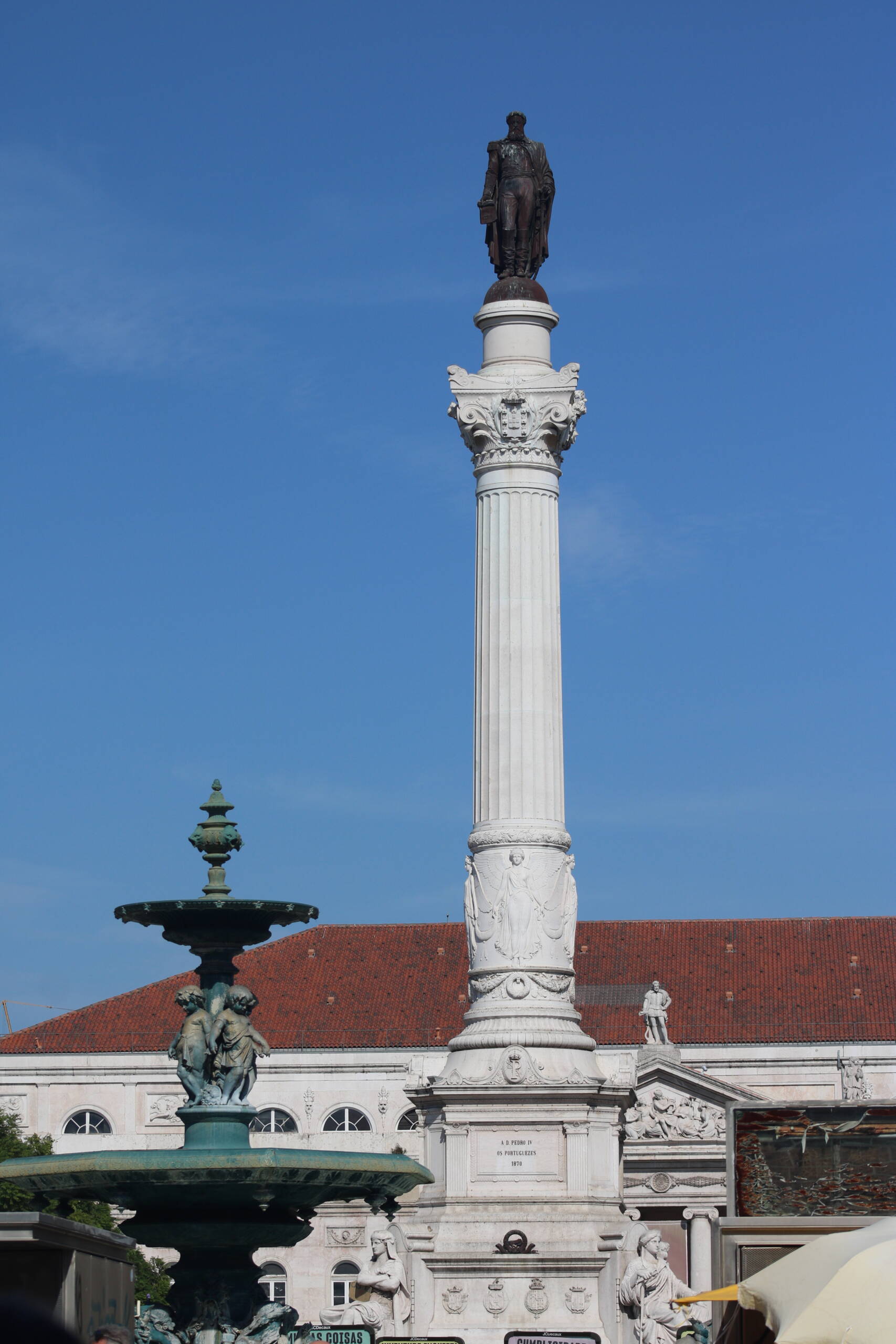There’s something magnetic about the way statues in European cities seem to keep watch over the flow of daily life. In Lisbon, I found myself craning my neck under the bluest of skies to admire the towering pedestal crowned by the statue of Dom Pedro IV at Rossio Square. The monument is so tall that at first you don’t look at the details, just the sheer vertical reach of the fluted column. But then, standing still, you notice the Corinthian flourishes curling at the top, the intricate reliefs near its base, and the quiet dignity of the bronze figure gazing out over the square as though making sure Lisbon hasn’t forgotten its history.

The scene is not static, though. Around it life carries on: the splash of the nearby fountain where winged cherubs seem mid-gossip, the sound of café tables being pulled across stone pavement, the chatter of tourists trying to guess which way leads to the river. I laughed at myself when I realized I had walked in circles twice around the square, pretending to admire the architecture but in truth just trying to find a better angle for a photograph. That’s what travel often is for me—half awe, half embarrassment at how much of a tourist I really look like, fumbling with my camera while the locals glide past with an espresso in hand.
I like this square not only because of its grandeur, but because it has that lived-in, layered quality that Lisbon does so well. You feel centuries stacked on top of each other: neoclassical ambition, baroque ornament, tiled façades, red rooftops all sun-washed and a little worn. Standing beneath Dom Pedro’s gaze, I thought about the paradox of monuments—how they’re built to freeze memory in stone and bronze, yet they only really come alive in the passing everyday moments. A busker playing a guitar nearby, a couple arguing softly by the fountain, the smell of grilled sardines drifting in from a side street—all of that is as much a part of the monument as the sculpted marble itself.
Travel for me is often about this friction: the official story cast in stone and the unofficial one lived in motion around it. That’s why I take photos, not only to remember the column and the statue but to capture my own smallness beneath it, the awkward tilt of my head, the way the Lisbon sky felt impossibly large that day.
Leave a Reply